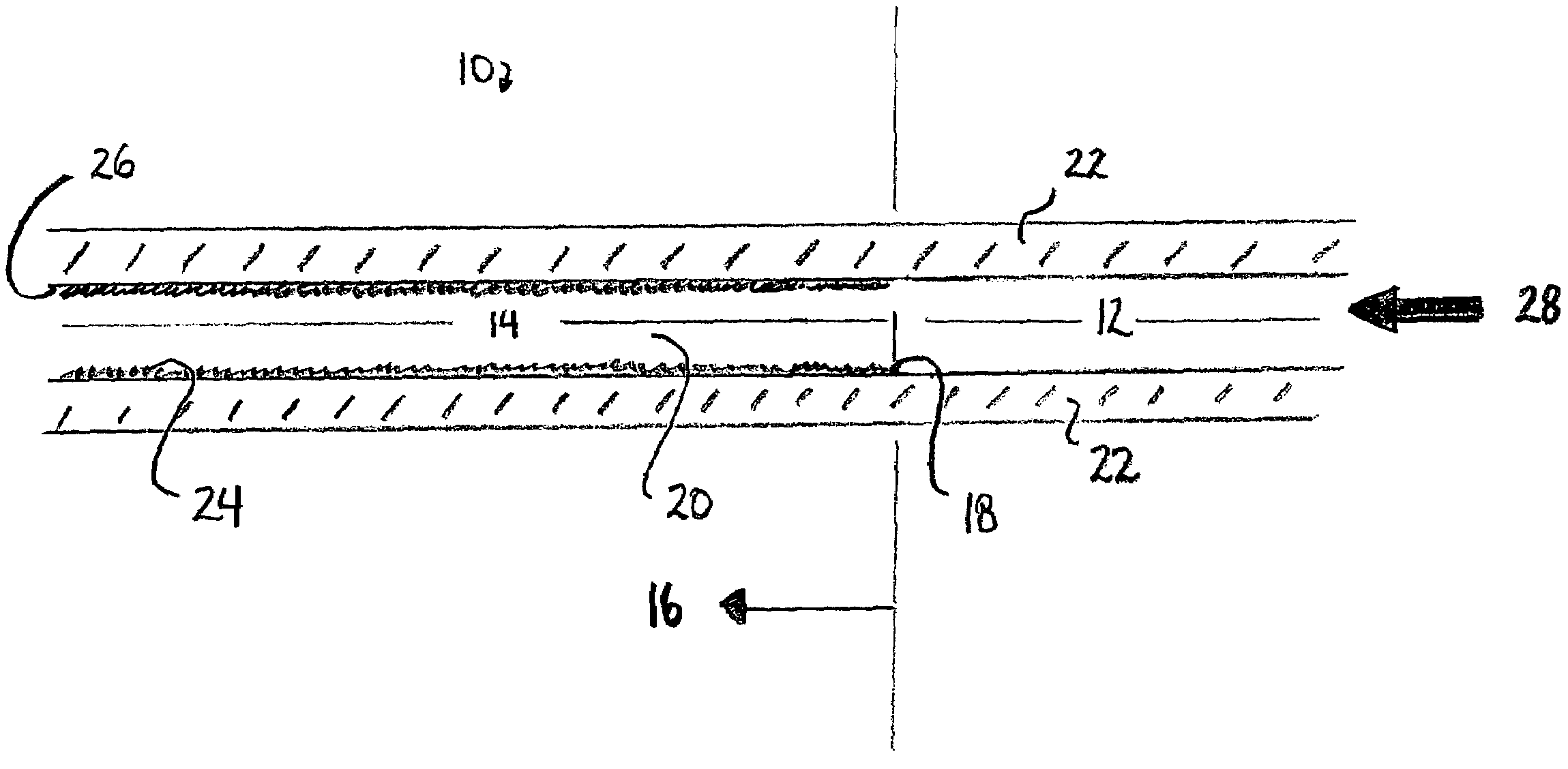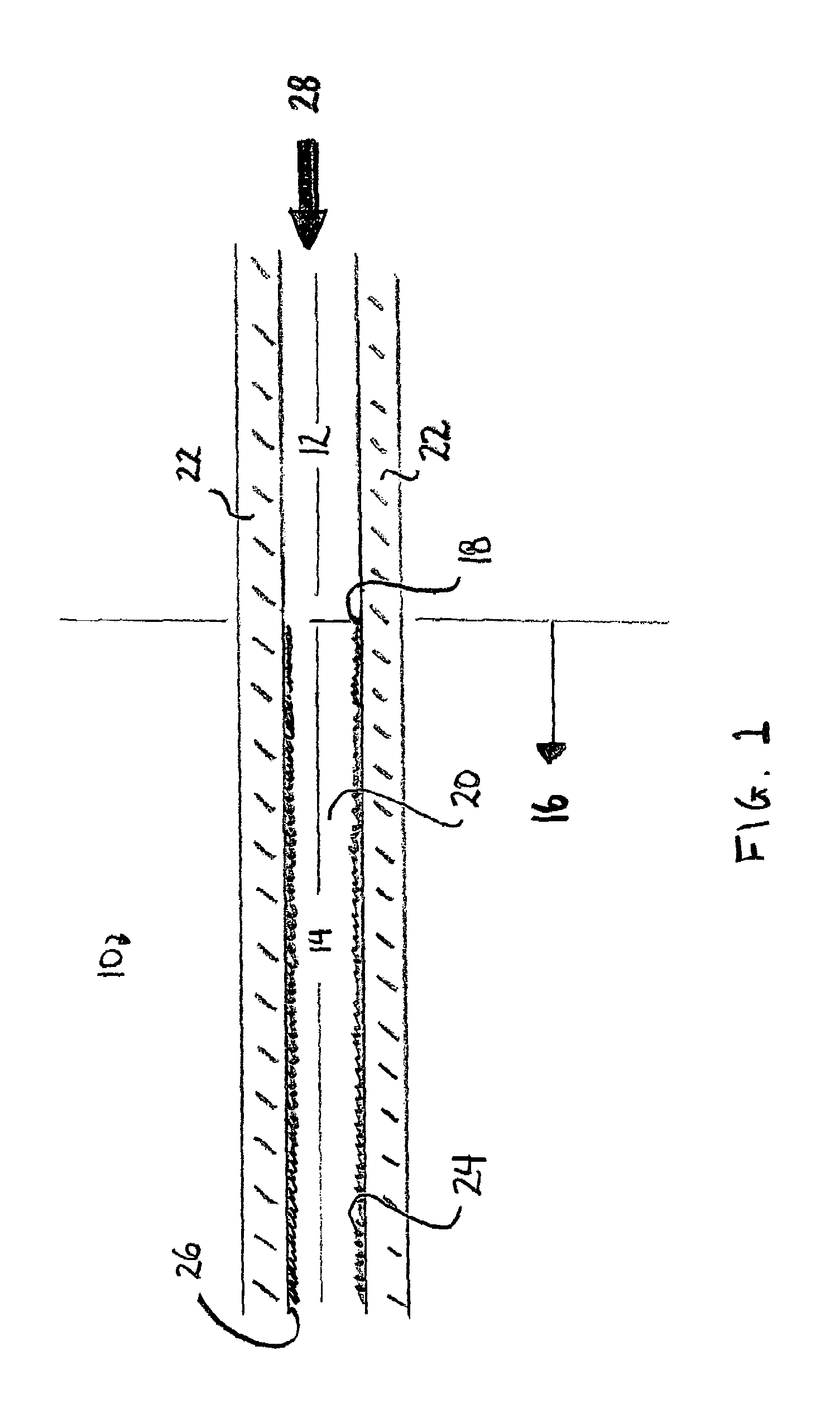Isobutane alkylation
a technology of isobutane and catalytic isobutane, which is applied in the direction of catalyst activation/preparation, physical/chemical process catalysts, gas-gas reaction processes, etc., can solve the disadvantages of alkylation catalysts, catalyst substrates that maximize mass transfer, for example pellet beds and ultra-short channel length monolithic catalysts
- Summary
- Abstract
- Description
- Claims
- Application Information
AI Technical Summary
Benefits of technology
Problems solved by technology
Method used
Image
Examples
Embodiment Construction
[0016]As depicted in FIG. 1, the catalytic isobutane alkylation reactor 10 comprises an alkylation reactor flow channel 20 that defines flow channel wall 22. Flow channel 20 further defines entrance region 12 and downstream region 14, wherein downstream flow 16 indicates the direction of flow through the reactor. An alkylation catalyst 24 is positioned on the inner face 26 of channel wall 22 in downstream region 14. The upstream position limit of catalyst 24 defines a transition point 18 between entrance region 12 and downstream region 14. Catalyst 24 may be positioned on only a portion of inner face 26 of channel wall 22, in downstream region 14.
[0017]A feed stream 28 comprising olefin and isobutane is introduced into the catalytic reactor 10 passing into entrance region 12. The isobutane flow rate is controlled such that a boundary layer is fully developed in downstream region 14. Catalytic reactor 10 is operated in a mass-transfer controlled regime for the alkylation of the isobu...
PUM
| Property | Measurement | Unit |
|---|---|---|
| rate of mass transfer | aaaaa | aaaaa |
| mass-transfer | aaaaa | aaaaa |
| flow diameter | aaaaa | aaaaa |
Abstract
Description
Claims
Application Information
 Login to View More
Login to View More - R&D
- Intellectual Property
- Life Sciences
- Materials
- Tech Scout
- Unparalleled Data Quality
- Higher Quality Content
- 60% Fewer Hallucinations
Browse by: Latest US Patents, China's latest patents, Technical Efficacy Thesaurus, Application Domain, Technology Topic, Popular Technical Reports.
© 2025 PatSnap. All rights reserved.Legal|Privacy policy|Modern Slavery Act Transparency Statement|Sitemap|About US| Contact US: help@patsnap.com


